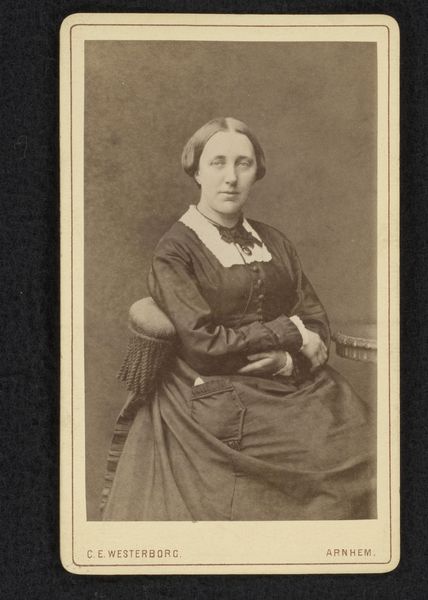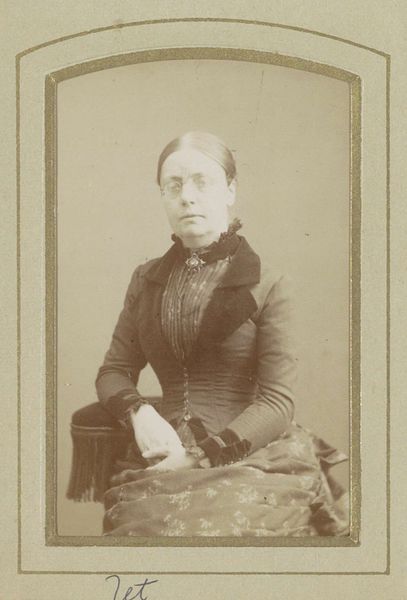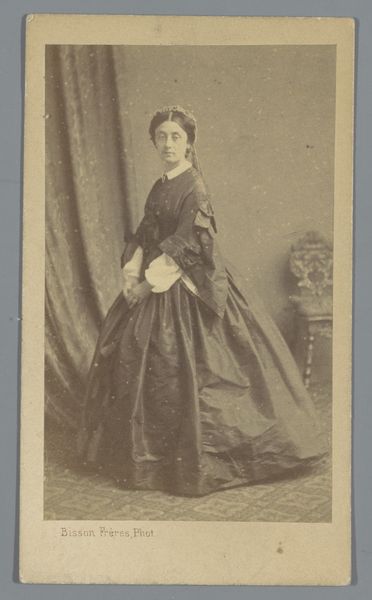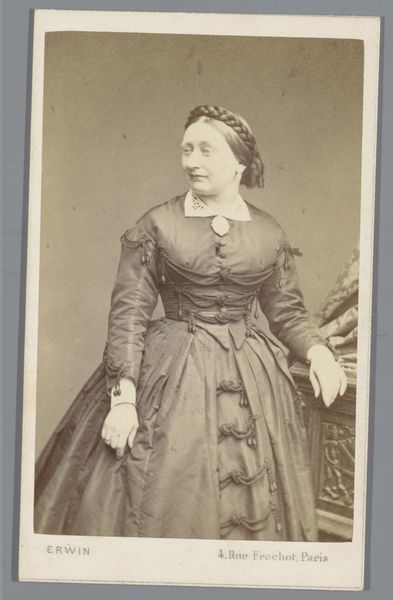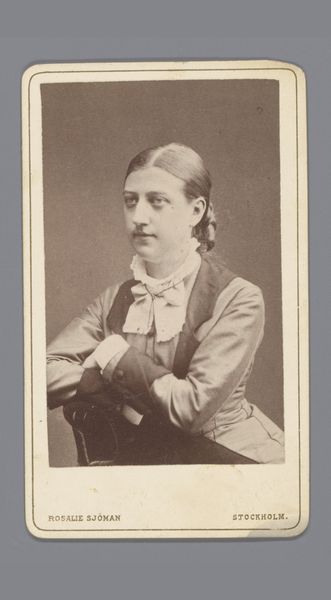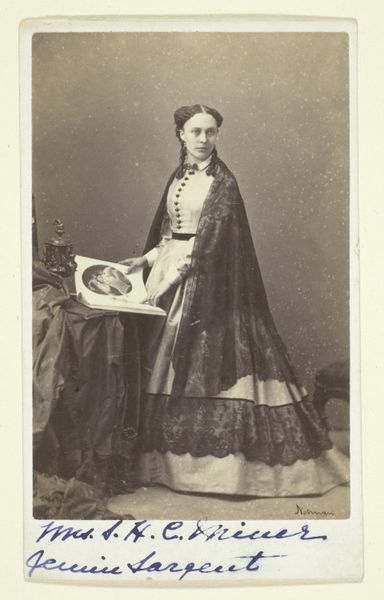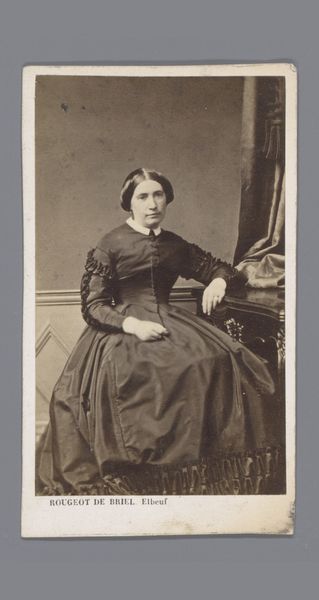
Portret van een onbekende vrouw, achterstevoren zittend op een stoel 1881 - 1905
0:00
0:00
photography
#
portrait
#
photography
#
historical fashion
#
realism
Dimensions: height 100 mm, width 62 mm
Copyright: Rijks Museum: Open Domain
Curator: We’re looking at an interesting photographic portrait here titled “Portret van een onbekende vrouw, achterstevoren zittend op een stoel” which translates to "Portrait of an unknown woman sitting backwards on a chair.” The artist is Alfred Röhlander, and it was created sometime between 1881 and 1905. Editor: Immediately, I'm struck by the intimacy. There's a vulnerability in her direct gaze, combined with the unusual pose; it challenges typical conventions. There's something about that gaze that disrupts the formality we might expect. Curator: Absolutely. That backwards position, while seemingly casual, adds a layer of symbolic complexity. Backs often represent the past, the unseen, and perhaps a hidden history. There’s also a certain rebellion. Editor: Yes, and within that context, the "unknown" becomes politically charged. So often, women’s histories are obscured, unnamed. The photographic process itself democratizes representation, pushing against a history of portraiture reserved for the elite. We're faced with the question of whose stories get told, and how. Curator: Her fashion choices offer symbolic cues as well. That ruffled collar, that tightly fitted dress—while seemingly fashionable for the period, could also point to certain constraints, or even class status. Her direct look, however, seems to subtly defy these limitations. The lack of ostentatious ornamentation could suggest self-reliance. Editor: Agreed. Even the photographer's choice to capture her this way—informal, introspective—moves beyond societal expectations of feminine docility. It sparks so many questions, particularly surrounding the conditions of female visibility and the erasure of identities within patriarchal systems. Curator: For me, I also reflect on our relationship with this “unknown woman.” Are we simply passive viewers, or do we become active participants in restoring her narrative? The choice of photographic realism gives a real feeling for this person, it makes her humanity seem close and obtainable, even though it may have been shot over 100 years ago. Editor: It is true, and her portrait also acts as an invitation to reassess historical records, challenge dominant narratives, and seek out the overlooked. So much depth emerges through looking. Curator: Definitely. This image reminds us of the layers of interpretation embedded in any representation of the past, of how cultural context is embedded within artistic expression, to build meaning through simple, relatable symbols. Editor: Exactly, the simple setting emphasizes that photography is always a political tool, subtly shaping collective memory and understanding of power.
Comments
No comments
Be the first to comment and join the conversation on the ultimate creative platform.
